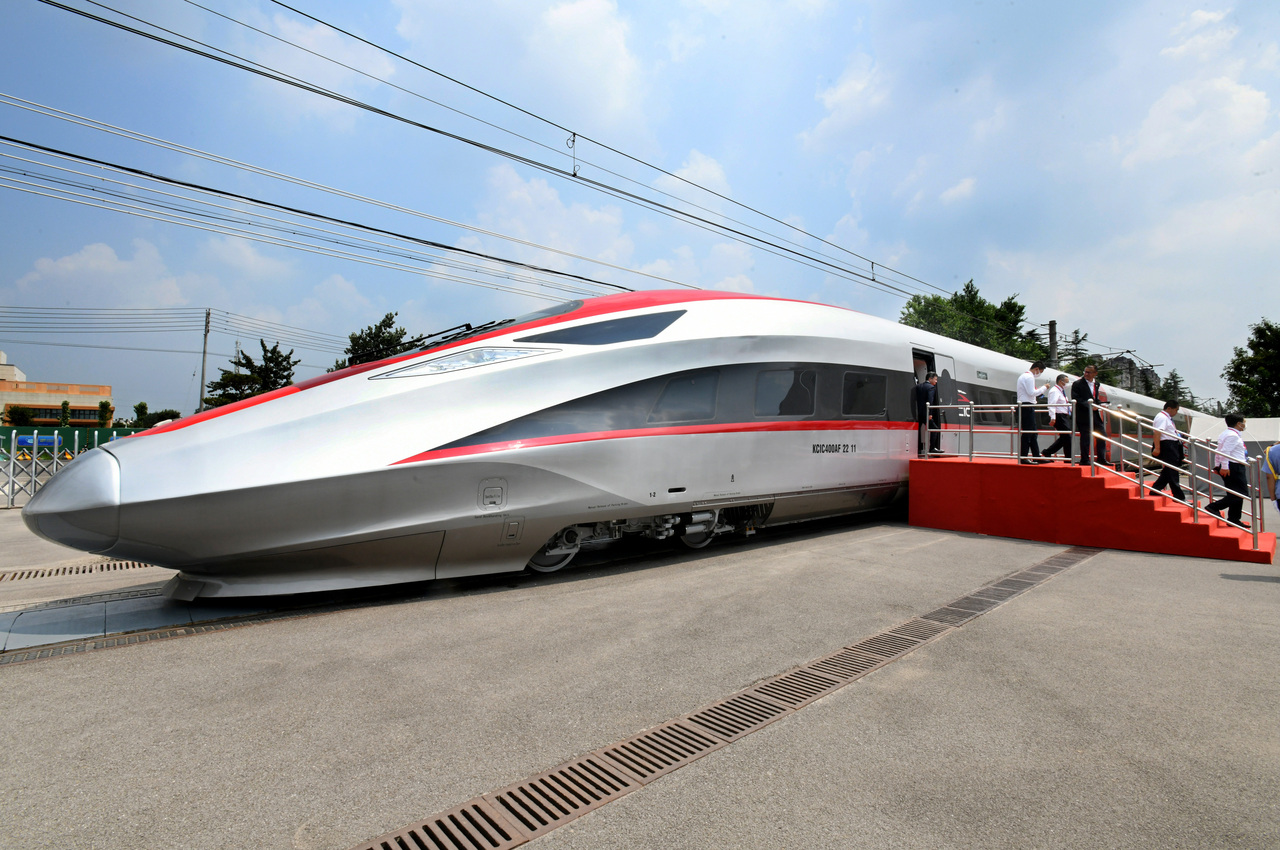China ships high-speed trains to Indonesia
Sign up now: Get insights on Asia's fast-moving developments

The 11 passenger trains feature advanced smart technology, safety protocols, strong environmental adaptability.
PHOTO: XINHUA
Follow topic:
BEIJING (CHINA DAILY/ASIA NEWS NETWORK) - The first batch of Chinese-made high-speed trains, customised for the Jakarta-Bandung high-speed railway in Indonesia, will arrive in the South-east Asian country by the end of this month, marking a milestone for China's bullet train industry, said manufacturer CRRC Qingdao Sifang.
Sailing from Qingdao Port in East China's Shandong province, CRRC Qingdao Sifang, a subsidiary of state-owned China Railway Rolling Stock, will transport 11 sets of electric passenger trains and an inspection train to Indonesia for the landmark project under the Belt and Road Initiative (BRI).
Carried by Cosco Shipping Specialised Carriers - China's largest specialised shipping operator by fleet size - the trains will reach Jakarta within a few days, and delivery of the remainder will be completed in batches by the beginning of 2023, said Mr Ma Qiang, vice-president of the company's overseas business unit.
Their delivery will lay a solid foundation for the high-quality, on schedule completion of the Jakarta-Bandung high-speed railway, said Mr Ma.
Once completed, the 142km modern railroad will be the first in South-east Asia capable of handling trains travelling at speeds of up to 350kmh.
It will cut travel time between the national capital, Jakarta, and Bandung, West Java's provincial capital, from more than three hours to just 40 minutes.
Jakarta-based PT Kereta Cepat Indonesia-China, the railway project's prime contractor, said construction work was 85 per cent complete in July. It is expected to be fully complete by the end of the year.
The 11 passenger trains, also known as electric multiple units (EMUs), were designed and manufactured by CRRC Qingdao Sifang.
They feature advanced smart technology, safety protocols, strong environmental adaptability and distinctive local characteristics, said Mr Zhang Fangtao, chief designer of the EMUs at CRRC Qingdao Sifang.
Each eight-carriage train has one first-class car, one dining car and six second-class cars, with a total seating capacity of 601 passengers.
"The EMUs are equipped with 2,500 monitoring points for timely detection, early warning and diagnoses of all key systems. The inspection train has been designed to provide comprehensive inspection functions for the Jakarta-Bandung high-speed railway, including a diverse array of inspection equipment for track alignment, overhead cables, and communications and signalling systems," said Mr Zhang.
Similar to high-speed railway services in China, which have effectively spurred business activities along rail networks, the Jakarta-Bandung high-speed railway will enrich the development of infrastructure facilities and generate fresh growth points in both the services sector and trade in services in Indonesia and South-east Asia, said Mr Luo Renjian, a researcher at the Institute of Transportation Research, which operates under the aegis of the National Development and Reform Commission, the country's top economic regulator.
Mr Luo said the 1,035km Laos-China Railway linking south-west China's Kunming, capital of Yunnan province, with the Laotian capital of Vientiane, is another example of enhanced cooperation between China and countries participating in the BRI.
It has already expanded land-based trade between China and the Association of South-east Asian Nations.
Boosted by surging trade volume, favourable policy measures brought by the Regional Comprehensive Economic Partnership agreement and other factors, Laos-China Railway, a Vientiane-based joint venture responsible for the operation of the railway's Laos section, announced in early August that since its opening in December, cross-border products transported by the railroad have exceeded one million metric tonnes.

